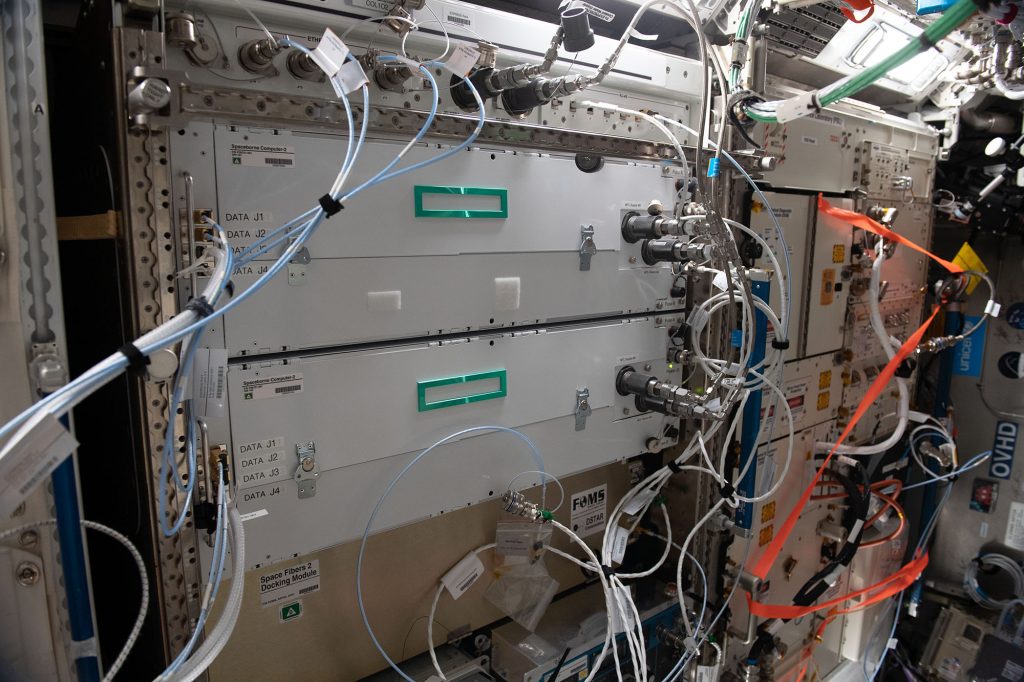New Microsoft Azure partnership will accelerate research 'from months to minutes' on ISS
Microsoft and HPE are working to overcome a major challenge on the International Space Station, low internet bandwidth.

What you need to know
- A partnership between Hewlett Packard Enterprise and Microsoft will help edge computing on the International Space Station.
- The Spaceborne Computer-2 was sent to the International Space Station in February.
- Using the Spaceborne Computer-2 and Azure has reduced the time of some work "from months to minutes."
Microsoft and Hewlett Packard Enterprise (HPE) worked together to help astronauts on the International Space Station (ISS) process data locally. One of the main constraints of the ISS is internet bandwidth. The entire station can only use 2MB/s for two hours per week. The maximum download speed on the ISS is 250KB/s. This bottlenecks experiments that require data to be sent down to Earth for processing. The Spaceborne Computer-2 from HPE can process data locally and send only relevant data for processing.
"The latency from space on the International Space Station is significant. It takes a very long time to get the data from the International Space Station back to Earth," says Mark R. Fernandez, principal investigator of Spaceborne Computer-2.
People on the ISS perform hundreds of experiments, but a Microsoft blog post focuses on one to illustrate the benefit of having the HPE computer on board. On the ISS, astronauts monitor their health and look for anomalies. Data from astronauts is compared to the National Institute for Health database to discover new mutations. Sequencing a single human genome generates 200GB of raw data, which would take months to transmit to Earth.
By having the Spaceborne Computer-2 analyze data locally, the amount of information that has to be sent to Earth is dramatically lowered. That data can then be sent into Azure computers for processing.
Microsoft's blog post compares the benefit of having Spaceborne Computer-2 to relaying information from the body to the brain and back, "It's as if your hand normally sent information to your brain and had to wait for analysis and response before giving the signal to pull back from a hot stove, and then it suddenly got the ability to analyze the temperature right at the fingertip itself and decide to immediately recoil from the heat."
Fernandez spoke with a frustrated researcher about it taking months to get data from the space station. The Spaceborne Computer processed the data in six minutes, compressed it, and downloaded a file that was 20,000 times smaller. "So we went from months to minutes," said Fernandez. "And that's when the lightbulb went off."
The U.S. Congress has only authorized a budget for the ISS through 2024. Christine Kretz, vice president of programs and partnerships at the International Space Station U.S. National Laboratory, emphasizes the importance of getting work done quickly, "We've got to get as much as we can done in the time we have left."
All the latest news, reviews, and guides for Windows and Xbox diehards.

Sean Endicott is a news writer and apps editor for Windows Central with 11+ years of experience. A Nottingham Trent journalism graduate, Sean has covered the industry’s arc from the Lumia era to the launch of Windows 11 and generative AI. Having started at Thrifter, he uses his expertise in price tracking to help readers find genuine hardware value.
Beyond tech news, Sean is a UK sports media pioneer. In 2017, he became one of the first to stream via smartphone and is an expert in AP Capture systems. A tech-forward coach, he was named 2024 BAFA Youth Coach of the Year. He is focused on using technology—from AI to Clipchamp—to gain a practical edge.

